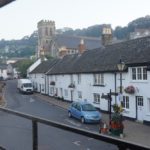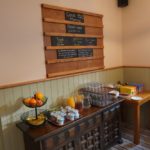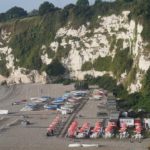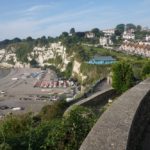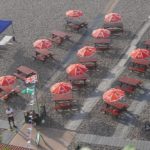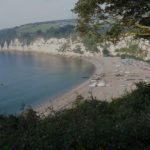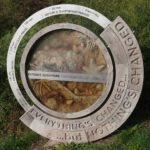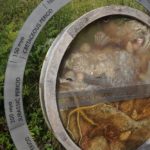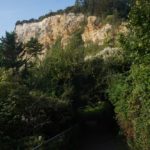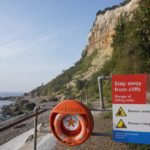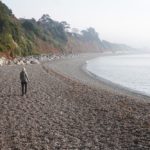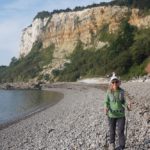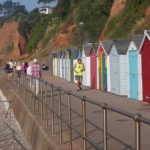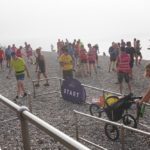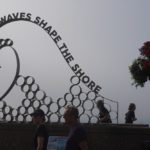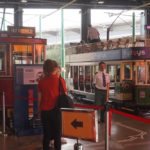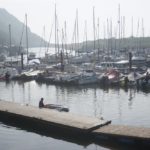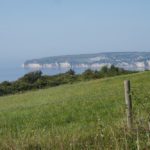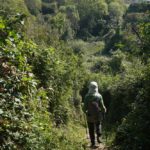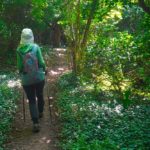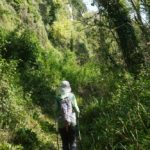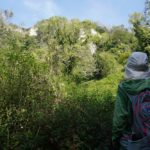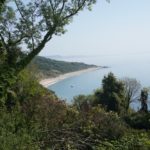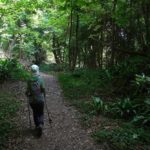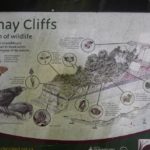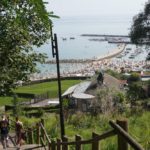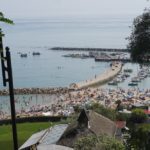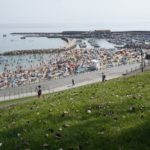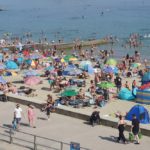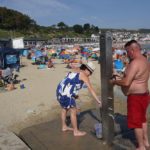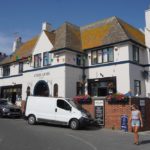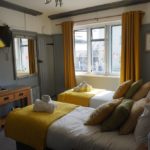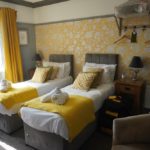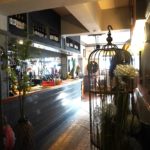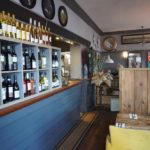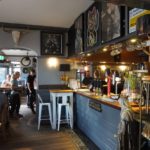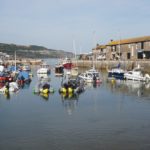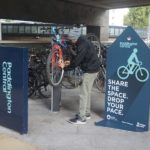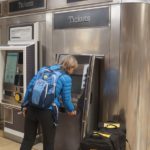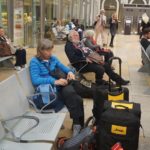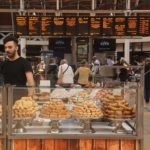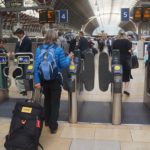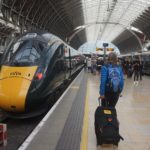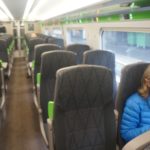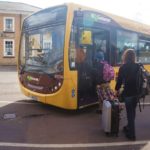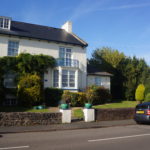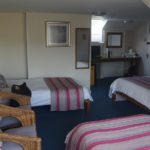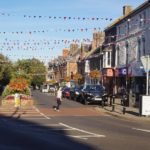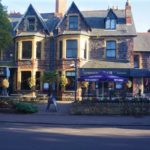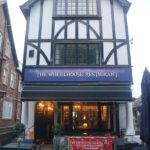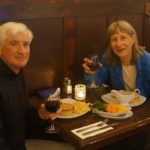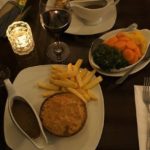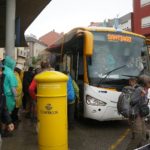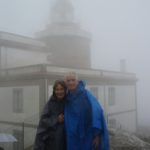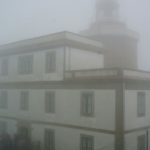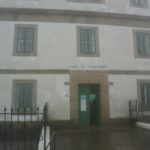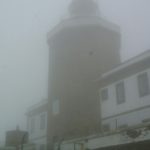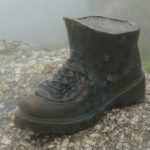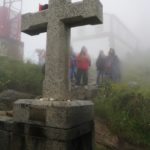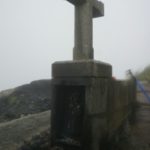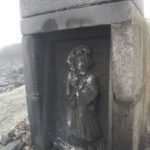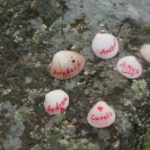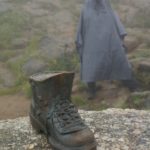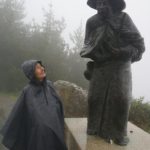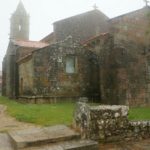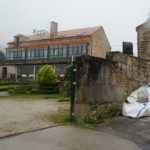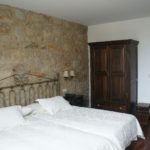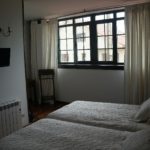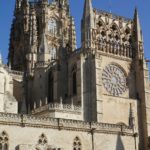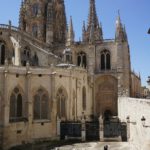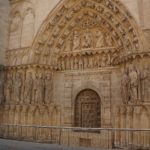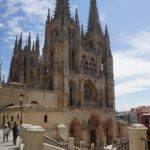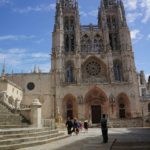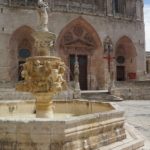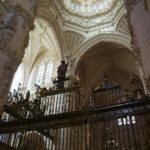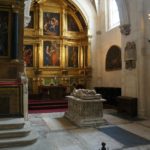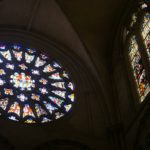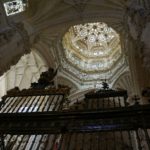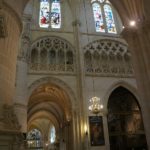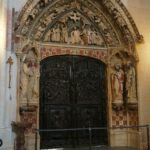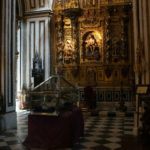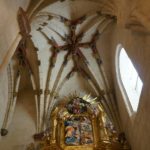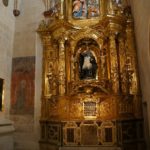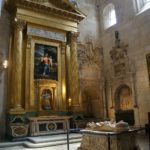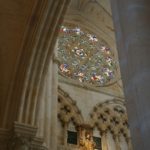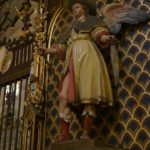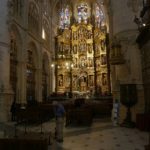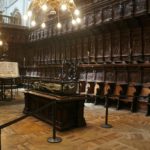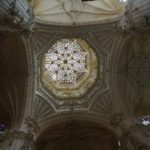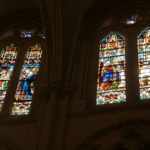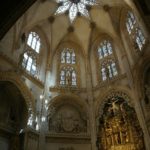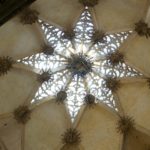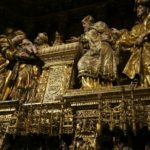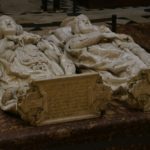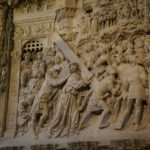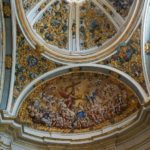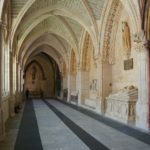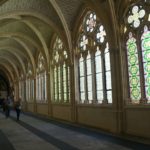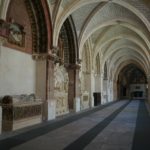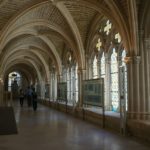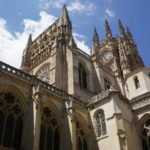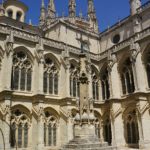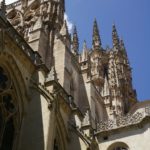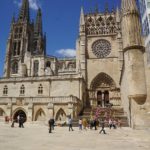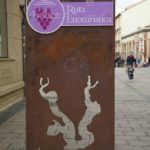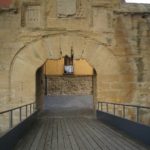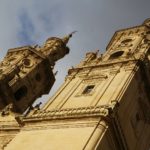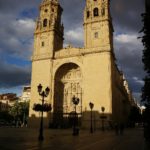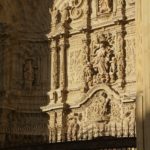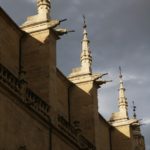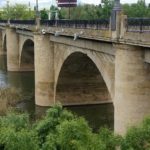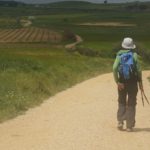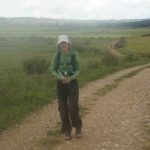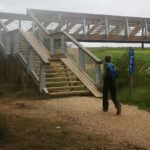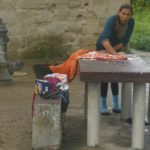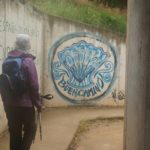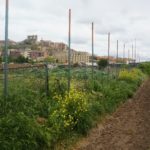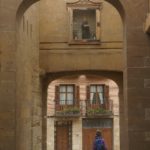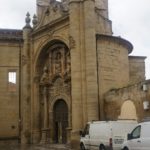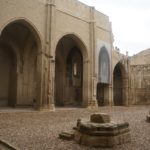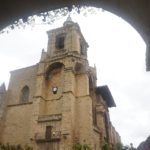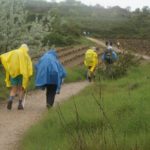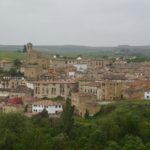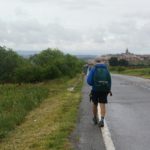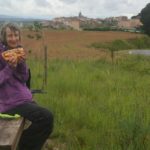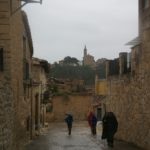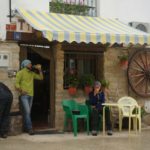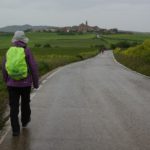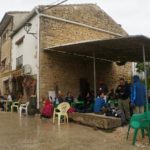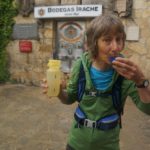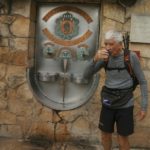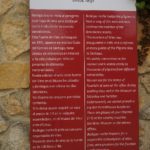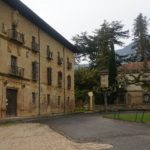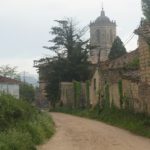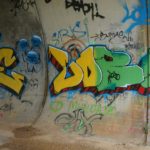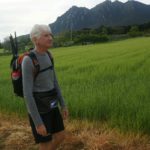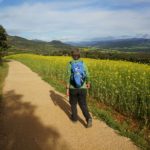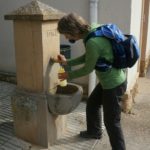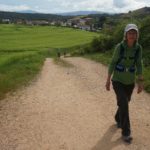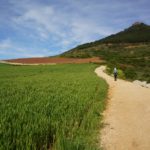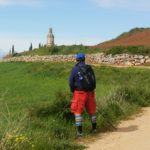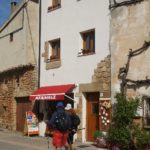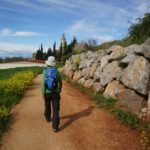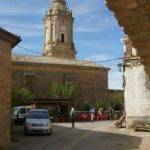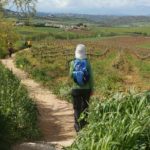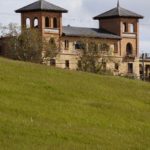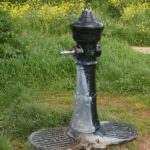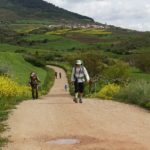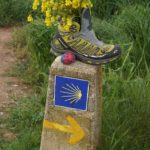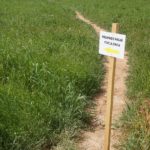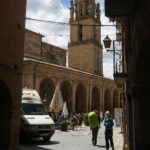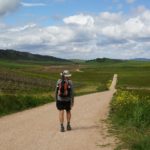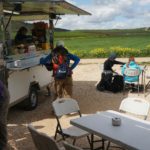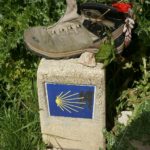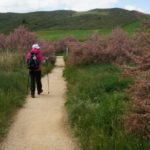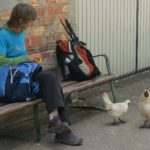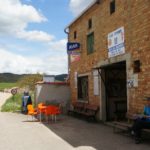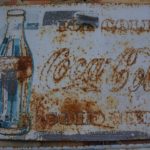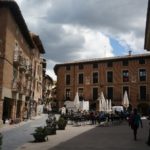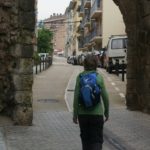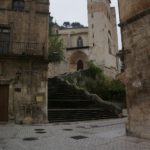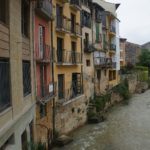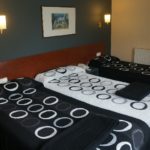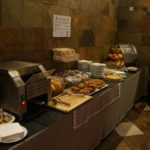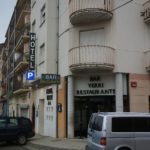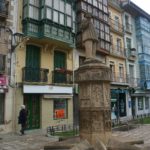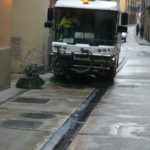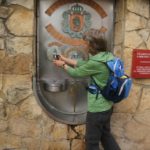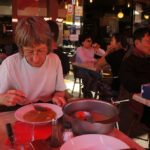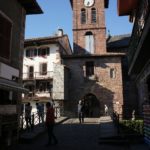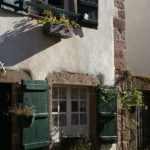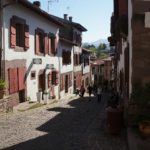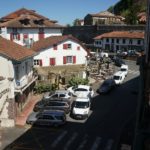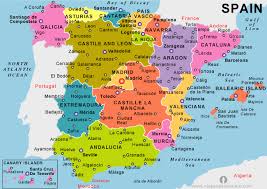Beer to Lyme Regis 17km
Ascension 461 Accumulated Ascension 3095
We were very tired at the end of yesterday so hit the sack early and even the wake couldn’t wake us up. We are finding it difficult to sleep at night because the rooms are so warm. The B & Bs and small hotels are all made of thick walls of stone or brick. In the heatwave these absorb heat all day and then radiate the heat out all night. None of the accommodation has air conditioning or a heat pump but some do provide a portable fan. The bedding also seems to be heavy winter weight. We often have to sleep with the curtains drawn back and the windows wide open. Still we mustn’t complain we absolutely appreciate a soft comfortable bed each night for our tired old bodies.
Leaving Beer this morning we climbed over one little head land and then had two options. Our preferred option one if the tide was out, was to walk along the beach to Seaton. Option two was to go inland over a hill via a road. We checked the tide times with the ice cream seller at the beach and he said low tide had been 7.30am so we were good to go. The beach was loose pebbles and very difficult to walk on. It was only about a kilometre but you could feel the energy being sucked out of your legs with each step. Eventually we got to Seaton and off the beach and onto a promenade. There were a lot of people running about and we realised it was a Park Run. We spoke to one of the marshalls and it was exactly the same format as the Park Runs Barbara did at Otaihanga Domain. Every Saturday, 9.00am a 5km run.
At Seaton we bought some lunch and had a quick look at the historic tramway they have. There are 14 trams in the fleet and the ones we saw were very cute and one a double decker. As we left Seaton at Axmouth we had to cross the River Axe and the only real climb of the day up Haven Cliff. On this climb we got talking with a woman who was in the army, Ellie, and her Nepalese companion, a Gurkha, also in the army. He didn’t give us his name but I will call him Tensing. They were very friendly and chatty and the funny thing was Tensing kept referring to us as Sir and Ma’am. He said the secret to climbing hills was to distract the mind and so he chatted and asked questions all the time. And it worked. After going through yet another golf course we entered the Axmouth – Lyme Regis Undercliff, a National Nature Reserve. There was a truly massive cliff fall on Xmas Eve 1839 and the ground was considered so unstable it has not been farmed or changed since. It is effectively a wilderness area of virtually virgin woodland and dense scrub often with an almost eerie character.
With no sheep, cattle or rabbits it has become a safe habitat for much flora and fauna, many birds, flowers, butterflies and small animals thrive there. The geology of the Jurassic Coast makes the area very susceptible to landslides. Long spells of wet weather saturate permeable Cretaceous rocks. These rocks sit on an impermeable clay, they eventually give way due to the pressure exerted on them by the sheer volume of water and break away from the cliffs, leading to great scars on the landscape called undercliffs. Geology lesson for the day.
The walking through the undercliff was surprisingly hard. The track was narrow and sharply twisted and turned left and right and up and down. There were rocks and tree roots everywhere and you had to concentrate all the time on where to put your feet. Over 10km of this and it made for slow progress. It was more like walking through some rugged NZ bush. The good thing was it was almost all under the tree canopy so a lot cooler than the 26 degrees out in the sun.
Except at Seaton and at the end at Lyme Regis we didn’t see the sea all day. We are now in Lyme Regis and more about that tomorrow.
- Room view from The Dolphin Hotel
- The Dolphin Hotel
- The Dolphin Hotel
- Beer Beach
- Beer Beach
- Beer Beach
- Beer Beach
- Seaton Hole Beach
- Seaton Hole Beach
- Beer Hill
- Seaton Hole Beach
- Seaton Hole Beach
- Seaton Hole Beach
- Seaton Park Run
- Seaton Park Run
- Seaton Park Run
- Seaton Park Run
- Seaton
- Paul’s Bakery Seaton
- All sugar at Paul’s Bakery
- Seaton Heritage Tram
- Seaton Heritage Tram
- Axmouth- Lyme Regis Undercliffs
- Axmouth
- Axmouth
- Haven Cliff
- Axmouth- Lyme Regis Undercliffs
- Axmouth- Lyme Regis Undercliffs
- Axmouth- Lyme Regis Undercliffs
- Axmouth- Lyme Regis Undercliffs
- Axmouth- Lyme Regis Undercliffs
- Axmouth- Lyme Regis Undercliffs
- Axmouth- Lyme Regis Undercliffs
- Axmouth- Lyme Regis Undercliffs
- Axmouth- Lyme Regis Undercliffs
- Axmouth- Lyme Regis Undercliffs
- Axmouth- Lyme Regis Undercliffs
- Axmouth- Lyme Regis Undercliffs
- Axmouth- Lyme Regis Undercliffs
- Axmouth- Lyme Regis Undercliffs
- Axmouth- Lyme Regis Undercliffs
- Pinhay Cliffs
- The Cobb Lyme Regis
- The Cobb Lyme Regis
- The Cobb Lyme Regis
- The Cobb Lyme Regis
- The Cobb Lyme Regis
- The Cobb Lyme Regis
- The Cobb Lyme Regis
- The Cobb Lyme Regis
- The Cobb Arms, The Cobb Lyme Regis
- The Cobb Arms, The Cobb Lyme Regis
- The Cobb Arms, The Cobb Lyme Regis
- The Cobb Arms, The Cobb Lyme Regis
- The Cobb Arms, The Cobb Lyme Regis
- The Cobb Arms, The Cobb Lyme Regis
- The Cobb Arms, The Cobb Lyme Regis
- The Cobb Lyme Regis
- The Cobb Lyme Regis
- The Cobb Lyme Regis
- The Cobb Lyme Regis
- The Cobb Lyme Regis
- Cod and chips, The Cobb Lyme Regis
- Cod and chips, The Cobb Lyme Regis

